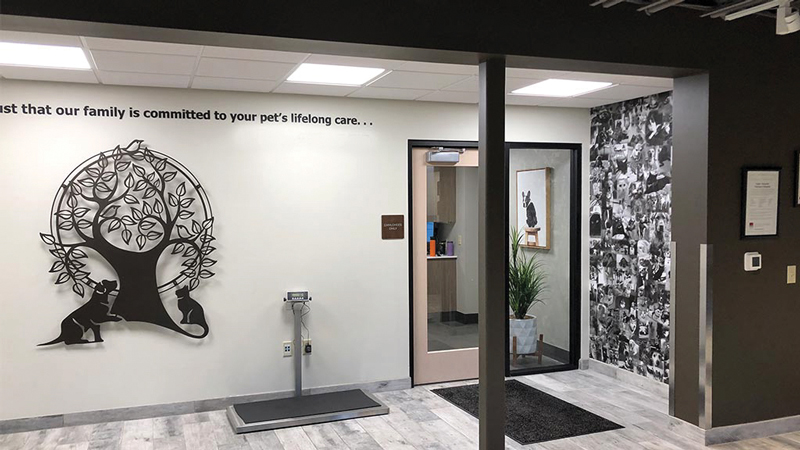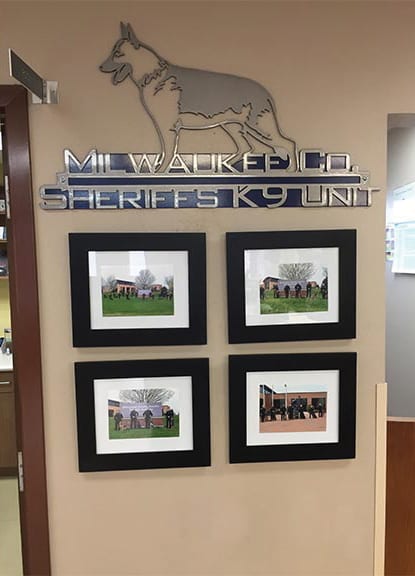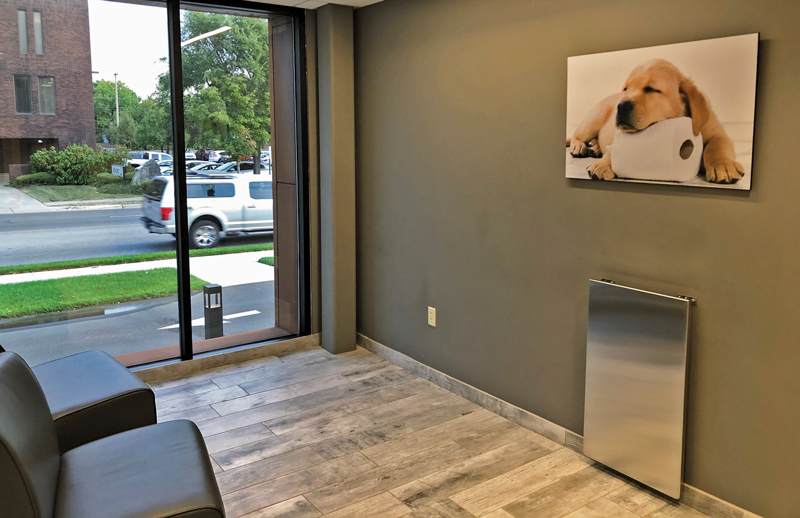20 Jan 2020
A growing number of US private practice owners have breathed new life into their businesses and taken a wrecking ball to others on their journey to becoming the best. Here are some of the things US vets did the past five years to stay ahead of the competition, deliver standout care and keep employees engaged...

The best veterinary practices in the US seldom stumble upon greatness; they visualise it and plan for it. They write the traditional mission statement – but, more importantly, regularly opine on its meaning and invite team members to triangulate their daily actions against it.
When practices cross-check their ideas for marketing, pricing, patient protocols, and HR practices such as hiring and employee reviews against their mission, they find their ideas take on the nuance and specificity needed to break away from the pack.
Everything gets challenged: the layout of the lobby, signage fonts, lighting, employee reviews and pricing, to name a few.

Romper Room design schemes with the predictable cartoon images of puppies, kittens and paw prints get ditched; utility racks full of food and products are shelved; and white coats get scrubbed for a cleaner, more approachable, business-casual look.
During team meetings, leaders read the latest stack of reviews and thank you cards, call out the employees who were responsible for the great feedback, and invite them to reflect how the practice’s mission may have guided their actions.
New employees are inspired from the outset when leaders point out that they weren’t hired for their skills, but for their talent and their natural close connection to ambitions reflected in the mission. The message isn’t we’re excited we found someone to fill this position; it’s we’re excited we found you.
The best practices in the US don’t accept an inherent level of chaos is built into the general practice business model.
They’ve looked closely at their workflow and treatment protocols to ensure cases, however diverse, move orderly through the practice; patients remain safe and unstressed; pet owners feel like individuals, not clients; and, most importantly, team members can succeed in their efforts to interact meaningfully with clients, to treat patients with compassion, and to stand out.
The best practices don’t have to say they’re great; they look it.
No negative signage. Great practices take down signs such as those shown in Figure 1. Who’s going to put their cell phone away anyhow? Besides, this messaging is institutional and angry.

You won’t find generic artwork from the local Target on these practices’ walls. Instead, they make use of their smartphone’s fancy camera, take great pictures of their employees, and then frame and mount them using an array of affordable printing services available today.
One practice contracted a local artist to sculpt its logo into a giant decorative wall piece. Another reached out to a children’s book illustrator for unique wall designs. Using regional talent creates synergy between community businesses, and brands both partners as invested in the local economy.
A mission statement features on the left, along with a sculpture of the practice’s logo by a local artist, while the paper on the right wall is a professional, yet affordable collage of employee pet photos (Figure 2).

Working with the community’s police dogs might be routine for these practices, but they know it’s riveting for their clients.
That’s why they celebrate community efforts like this on their walls (Figure 3). When schoolchildren visit and send hand-drawn thank you cards, they have them framed and placed around the practice for clients to coo over.
The US’ best practices don’t line up chairs against a wall (Figure 4). Chairs are arranged to give clients a choice of privacy or an opportunity to sit with others and talk (Figure 5).

Scrubs often clash with a practice’s colour scheme, don’t match, don’t fit and look slept in. Besides, animals aren’t used to the look of scrubs, or white coats for that matter. Best practices usually opt for a more-appealing and up-to-date business-casual look.
Just because they’re medical doesn’t mean they have to look clinical (Figure 6). Besides, most animals are wary of the traditional stainless steel gleam seen in most exam rooms. The US’ best practices are filling their exam rooms with light and giving them a comfortable, yet professional look.
The US’ best practices have even pushed back against the age-old tradition of annual reviews. Most see them for what they typically are: largely unproductive, time consuming and uncomfortable.
After all, what are annual reviews aiming to accomplish? Is it feedback for a job well (or not well) done? Should we really be waiting a year to sit down with an employee to share our thoughts on his or her performance?
At the US’ best veterinary practices, managers have morphed into team leaders who provide real-time praise and inspiration for co-workers; into women and men who regularly set a good example, and who bring consistency and oversight to each day’s efforts.
The US’ best veterinary practices have no tolerance for lone wolves, pot stirrers and crank pots. They understand three pathways exist to job satisfaction and engagement in one’s work:
To this end, practices often write civility guides and are unwavering in their intolerance for rude, abusive or disrespectful behaviour.
They also recognise employees have their own responsibilities to happiness. Practices encourage team members to eat right, exercise, and avail themselves of mental health services when needed.

While the US’ best practices acknowledge that achieving and maintaining greatness is not easy, all agree it feels excellent to be the best. Success comes with considerable thought, planning and effort, but the time and commitment spent are significantly offset by steady engagement, accomplishment and recognition.